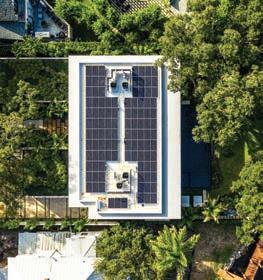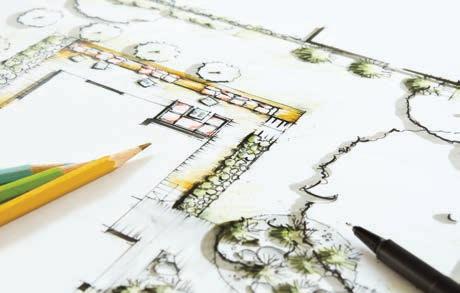
6 minute read
THE GOODS
SEVEN24/
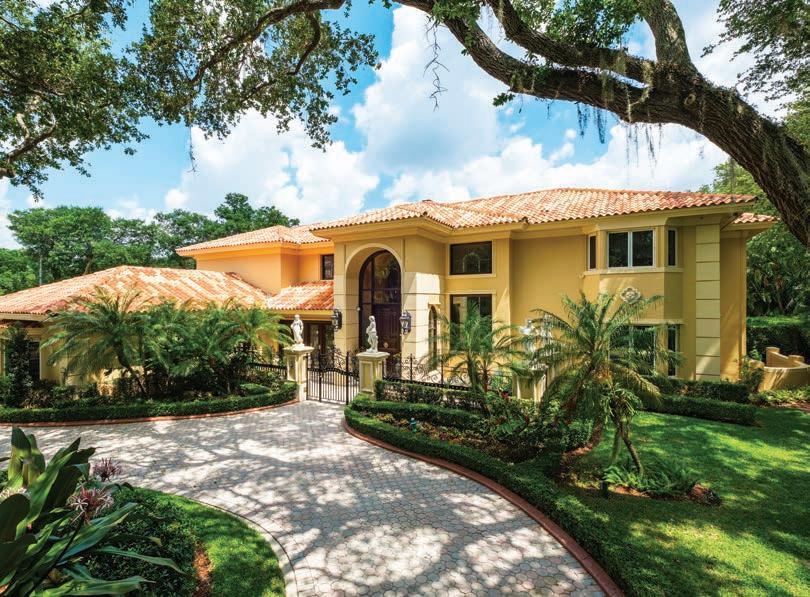
THE GOODS 3 Ways to Build a SUSTAINABLE Home
From fending off floods to tapping into environmentally friendly energy sources, creating a home that’s in sync with its South Florida surroundings is easy as 1-2-3
By Skye Sherman
Building a “future-ready” home isn’t just about smart appliances and high-tech features; prioritizing sustainability is a key piece of the puzzle.
“Greening homes in Fort Lauderdale and across the globe is essential to lessen the climate-change impacts our city is already experiencing,” says Glen Hadwen, sustainability manager at the City of Fort Lauderdale. “Changes small and large, from installing LED light bulbs to solar panels, all play a part.”
Achieving sustainability in South Florida—with its low elevation, porous geology, humid climate, endangered species, and air rich with sunshine and salt—comes with challenges but is especially important to our delicate environment. Here are some steps you can take to construct a greener home.
1
WORK WITH NATURE
Use biomimicry—designing the way nature designs—as your guide. Aim for minimal site disturbance and maximum green space; work with what you’ve got to create a space that complements or even regenerates (rather than depletes) the environment. “Check local zoning and figure out first what you’re allowed to do, then look at sustainable strategies and figure out what’s best to do,” recommends Griffin Morris, president of AIA Fort Lauderdale and senior project manager at Strang—an integrated architecture, engineering, interior design, and planning firm. Account for the threat of climate change, he advises, especially in coastal communities—new builds can employ techniques like elevating the first floor to mitigate potential flooding.
“On a new home build, zoning in South Florida typically requires us to use a base flood elevation (how high the ground can be) and a design flood elevation (how high the first floor of the home must be),” he explains. “Sometimes there’s an option for an understory, a covered area below the design flood elevation, usually limited to a garage or enclosed stair. Other zoning areas may require that you add retaining walls and raise the grade on your property.”
With Florida’s sea level rising as much as an inch every three years, according to NOAA tidal station data, factoring nature’s upcoming shifts into construction plans is crucial.
Victor Caban-Diaz, owner/principal of Building Ingenuity, adds that when designing a home, minimizing floor-to-ceiling windows on southern facades allows for indirect rather than direct sunlight to penetrate your home. “This helps keep the house cool,” he says. “The sun in South Florida rises and falls to the south of all buildings, which means all walls
Coming Soon
Poseidon Habitat Seawall, which fabricates ocean-friendly seawalls—available for waterfront residences—will soon be operational in Fort Lauderdale. Instead of the typical flat concrete, which is inhospitable to sea creatures, “living” seawalls provide crannies and crevices in which fish and filter-feeders can take up residence, cleaning and nourishing the ecosystem of local waterways as they go. Where possible, it’s best to cultivate a selfsustaining natural shoreline.
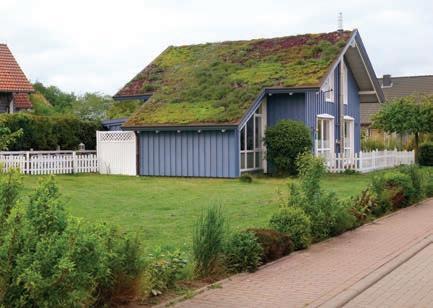
OLD HOME, NEW TRICKS
If you’re looking to green up the home you have, you’ve got options
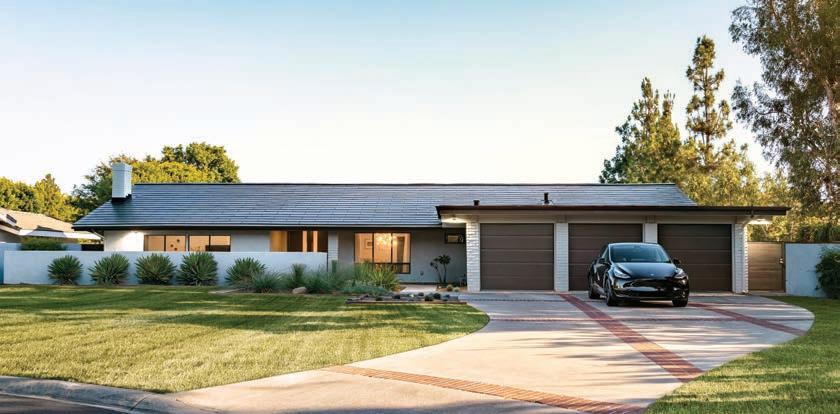
• Join a Broward County solar co-op to draw power from sunshine at a lower price. • Fort Lauderdale residents can participate in the Property Assessed Clean Energy (PACE) program, which incentivizes energy-efficient and hurricane-resilient imfacing south get direct beams of
provements such as impact- sunlight, which are the hottest.”
resistant windows, HVAC To further lessen your impact,
replacements, and solar utilize native plants and perme-
panel installations, providing able pavement, and plant trees:
as much as 100 percent of Contributing to the tree canopy
the upfront funding. • Pocketbook perk: The not only helps the planet, but the added shade keeps your home
Broward Water Partnership’s cooler naturally, resulting in
Conservation Pays program energy savings. offers free low-flow aerators Other examples of biomimand showerheads as well as icry in action take a page from $100 rebates for eligible self-cleaning plants like the replacements of older, hydrophobic lotus to develop water-inefficient toilets. • Contact a local plumber a glass that “self-cleans” every time it rains, conserving energy to install a heat-pump water (and window-washing costs); heater, which draws ambient a recently built LEED Platiheat from our ever-warm air num-certified home in Texas instead of generating heat, is outfitted with a roof that lowering operating costs relies on “thermosyphon ventiand energy consumption. lated” technology similar to the way temperature is regulated inside termite mounds. Homes can even be designed to manage 100 percent of stormwater runoff, repurposing the “gray water” to irrigate landscaping.
And instead of relying on the carbon-heavy global supply chain, “wherever possible, install finishes sourced from local manufacturers to lessen energy consumption from transporting materials from far locations,” says Caban-Diaz. Plus, locally grown materials are naturally suited to quirks of the local climate. As you build, shoot for Green Home Standard certification by the Florida Green Building Coalition (FGBC).
3CHOOSE THE RIGHT ROOF
Choosing a roofing option that can lower the amount of heat your home absorbs and maximize the green potential of your space depends on your roof’s angle, the structure supporting it, local code, and your budget. “Don’t neglect the view from above,” advises Max Strang, founder of Strang. “Beauty can come in the form of solar photovoltaic, planted roofs, and robust tree canopies,” he says. Planted roofs are either intensive, using a deep layer of soil to support plant life that can make your roof look like a planted yard, or extensive, which uses a tray system with a thinner layer of soil. Plant options for the latter are smaller, but they weigh less and are easier to install and repair. “Both systems help reduce heat gain from the sun (radiation) and the 2 USE EARTH-FRIENDLY MATERIALS Achieving home sustainability requires an exacting look at the very materials you’re using to construct your abode. Seek outside air (convection),” adds Morris. Strang sometimes sets the second floor of a home back farther than the first floor, installing a green roof in the resulting space to give residents privacy and a connection to nature. out non-toxic and ecologically responsible building materi- Also popular are solar roofs—covered in photovoltaic cells that als, such as natural finishes that are sustainably harvested, renewable, or convert sunlight directly into electricity. Tesla solar tiles can pay for themeven recycled; rammed-earth walls and wool insulation are also solid selves through the energy they harvest; you can monitor your real-time options that are light on both the earth and your home. energy production and control your system remotely through the Tesla
Moreover, ensure your materials are not harmful to your family nor app. Pair it with a Powerwall, Tesla’s home battery that stores the energy your surroundings. Recent developments include plywood that can be your tiles produce, for backup protection in case of outages. manufactured with an amino acid produced by the blue mussel mol- Alternatives include blue roofs, which store rainfall and then gradually lusk, thus free of volatile organic compounds (VOCs), which are noxious release it, and cool roofs, which reflect sunlight to reduce the transfer of chemicals emitted from many materials commonly used for interiors. heat to the building. Caban-Diaz also advises using light-colored tiles on Beachfront homes can use specially tinted “turtle glass” to protect against sloping roofs. “Dark colors absorb heat that transfers into the home and harmful light pollution that draws sea turtles inland, away from the ocean. causes more work for your air conditioning units,” he says. «
